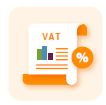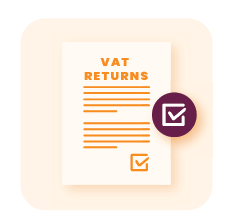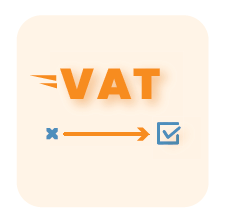VAT in Ireland
The Irish VAT Act, also known as the Value Added Tax – Consolidation Act 2010 (as amended), and the VAT Regulations (SI No 639 of 2010) are the primary sources of VAT law in Ireland. Meanwhile, the EU VAT Directive (2006/112/EC) and its corresponding Implementing Regulations regulate VAT in Ireland.
These EU directives have a direct impact on Ireland and can take precedence over any conflicting Irish VAT legislation if certain criteria are met. The Implementing Regulations also directly affect Ireland.
Selling in Ireland?
Scope of Taxation
VAT is charged on all goods or services supplied in Ireland by taxable individuals for a fee, as part of their business activities. The Irish VAT Act does not provide an exact definition of Ireland, but it refers only to the Republic of Ireland (“Ireland”) and its adjacent territorial seas for VAT purposes. Since Northern Ireland is part of the United Kingdom, it is not included in Ireland’s VAT calculations. Nevertheless, it has regulatory alignment with Ireland for specific cross-border goods supplies after the UK’s departure from the EU.
The term “supply” refers to more than only the selling of products and services, it also encompasses other types of transactions, such as:
- Leasing or Hiring of Goods.
- Granting, assigning, or surrendering a right.
- An agreement to refrain from doing something or the acceptance of a situation.
- Disposal of goods for free.
Removal of assets for private use
Download the Irish VAT Guide
Ireland – General VAT information
| Tax Authority | Irish Revenue Authority |
| VAT in local language | Value Added Tax |
| Currency | € Euro |
| VAT number format | IE+8 digits |
| IE1234567X; IE1X23456X; IE1234567XX | |
| VAT rates | Standard 23%; Reduced 13.5%, 9%, 5.6%, and 4.8% |
| Zero-rated (0%) and exempt | |
Thresholds |
|
| VAT Registration | |
| Established entities | EUR 37.500 for supplying services, EUR 75.000 for supplying goods |
| Non-established entities | No registration threshold (As of first business supply) |
| Intra-Community acquisitions | EUR 41.000 |
| Intra-EU Distance sales and electronically supplied services to consumers (OSS) | EUR 10.000 |
| VAT Group | Grouping is generally optional, not mandatory. |
| Voluntary Registration | Registration is mandatory but individuals or entities that are not required to register for VAT can still choose to do so. |
| Recovery of VAT by non-established businesses | Yes |
Compliance Returns and Deadlines |
|
| VAT Return | Electronic VAT returns must be filed within 23 days following the end of the bi-monthly VAT period. VAT returns submitted manually are due by the 19th of the month following each taxable period. |
| Frequency | Monthly, Bi-Monthly, Bi-Annual, Tri-Annual, and Annual returns (ARTD – Annual Return of Trading Details) |
| European Sales Listing | 23rd day following the end of the filing period |
| Intrastat | 23rd day following the end of the filing period |
| Annual Return | It is generally due with the VAT return following the taxable person’s financial year-end |
| Electronic Invoicing | It is permissible to issue invoices in electronic or paperless format, but it is not yet mandatory. |
Last Updated: 02/10/2023
Disclaimer
The information provided by Global VAT Compliance B.V. on this webpage is intended for general informational purposes only. Global VAT Compliance B.V. is not responsible for the accuracy of the information on these pages, and cannot be held liable for claims or losses deriving from the use of this information. If you wish to receive VAT related information please contact our experts at support@gvc.tax








